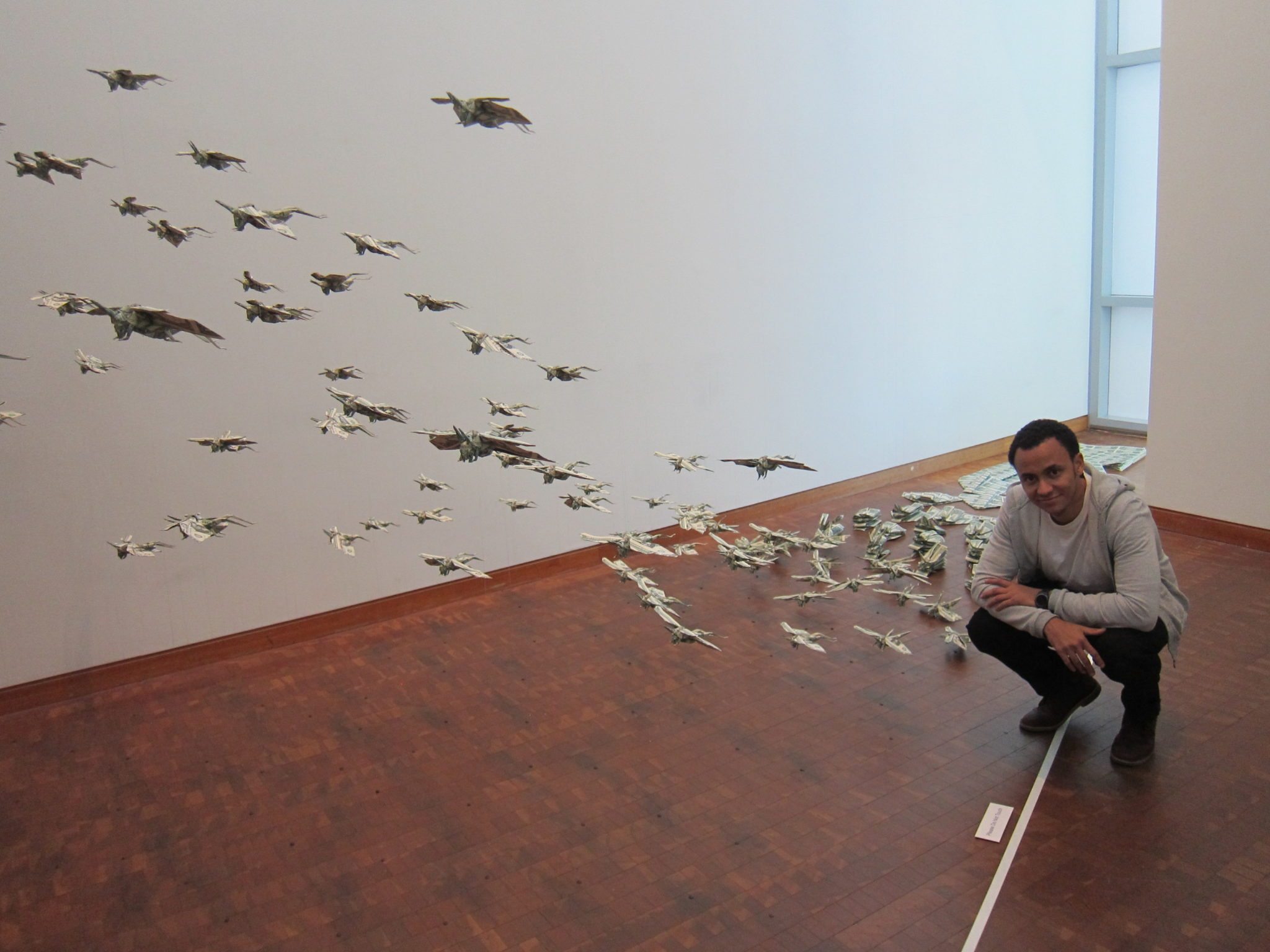
On March 9 of 2012, I went to Los Angeles for the members’ opening of a major exhibition of origami art at the Japanese American National Museum. “Folding paper, the Infinite Possibilities of Origami” was the brainchild of Meher McArthur. Art historian, curator, author, and much more; Meher has celebrated Japanese culture in many exhibits. In April 2010 she was invited by her friend Cheryl Revkin to see Vanessa Gould’s Peabody award-winning documentary “Between the Folds”. According to Meher, the documentary lit a spark in her to spend the next two years organizing this exhibit. Like its predecessors at the Mingei International Museum and Hanger 7 Gallery “Folding paper” is among the first exhibits to promote origami as an art form and is the first origami exhibition curated by an art historian. Visitors to the exhibit will be awed by the diversity of folding styles, each holding its own against the criteria applied to other forms of art. Meher reminds me to tell you the exhibit also shows the impact of origami on the worlds of science, engineering, fashion, and the peace movement.
Science and mathematical contributions to the process of designing origami art has been much discussed in the past decade. For many artists, including myself, these are indispensable tools. If the discussion a creator had with a work stopped there, it would lack the soul the work in this exhibit displays. Story, intuition, message, provocation are some of what elevate craft to an art. It was a wonderful experience to be surrounded by such poetry in paper.
Present for the opening were several of the more than 40 artists who contributed their work, all of them known colleagues and friends to me. These were Vanessa Gould, Martin Demaine, and Jeannine Moseley who arrived from eastern USA; Krystyna and Wojtek Burczyk from Poland; Jared Needle, Linda Tomoko Mihara, and myself from California; and Sipho Mabona from Switzerland. I mention Sipho last because, in my view, his contribution was conceptually more modern than most of the other artists, and thus stands out for special mention. Sipho’s work was an installation of stacks of dollar bill sheets (the kind that are printed at the federal mint before being cut into individual bills) that were transformed into partially folded insects, and finally to a swarm of locusts that rose from the floor. His origami was about making a statement about our consumer economy. I have seen hundreds of beautifully folded insects at conventions that yell “look at how complex this is”. It was a relief to see a masterful complex insect saying something more. Sipho had spent months folding hundreds of these insects, just for this one exhibit. I watched a group of children point in all directions as they admired his work. Clearly it was working on many levels for all age groups. This is one of the great advantages of having an origami exhibit. All ages and cultures can experience and share origami. This was best displayed by the contribution of Miri Golan whose figures that emerged from two books, the Torah, and the Koran, mingled together in harmony. You can see another blog about Sipho’s contribution to the exhibit at: http://www.mymodernmet.com/profiles/blogs/sipho-mabona-locusts-origami
A catalogue has been made for the show by International Arts & Artists (www.artsandartists.org) , the organization that produced the show, its transport, and venues over the next three years. You can order it from the Japanese American National Museum at this link: http://janmstore.com/150803.html. The catalogue features an extensive article by Meher McArthur on the history of origami practice and a critique of the artist’s works; and co-author Robert Lang’s article on the relative contributions of mathematics and intuition in making origami, and thinking creatively. The pages are beautifully illustrated with many full color pictures from the show. During the next several years the exhibit can be seen at the following locations and times:
Thorne-Sagendorph Art Gallery, Keene, NH
October 14, 2012 –January 6, 2013
Leigh Yawkey Woodson Art Museum, Wausau, WI
January 26 –April 7, 2013
Crocker Art Museum, Sacremento, CA
June 22 –September 29, 2013
Oregon Historical Society, Portland, OR
October 19 2013 –January 11, 2014
Peoria Riverfront Museum, Peoria, IL
January 31 –April 27, 2014